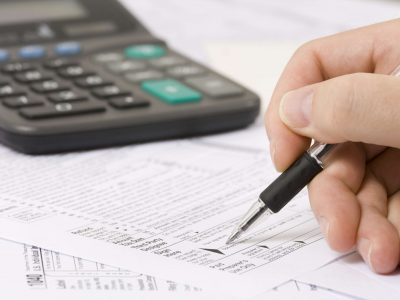
A stock dividend, also known as a bonus share, is a distribution of additional shares to existing shareholders of a company. This distribution is made by the company using its retained earnings or accumulated profits. The number of additional shares received by each shareholder is proportional to their existing holdings. For example, if a company declares a 10% stock dividend and an investor owns 100 shares, they will receive an additional 10 shares. A stock dividend is a distribution of additional shares of a company’s stock to existing shareholders. It is usually declared by the company’s board of directors and is paid out to shareholders in the form of additional shares, rather than cash.
- If the investor’s goals and the company’s goals are incompatible, the investor should consider investing in another company.
- This can be a positive signal to investors, as it may indicate the company’s confidence in its financial performance.
- Sign up for MarketBeat All Access to gain access to MarketBeat’s full suite of research tools.
- This can lead to increased trading activity and liquidity in the stock, potentially attracting more investors and improving market efficiency.
- Stock splits and stock dividends are also two of those topics in which we are often confused.
- This is usually done to reward shareholders and maintain their ownership percentage in the company.
More from InvestorPlace

The stock’s price may rise as it gets more accessible and more individuals can trade it. Stock splits, on average, are neither beneficial nor detrimental in the long run. A stock dividend is issued to keep earnings in the company and make the company more valuable in the future.
- If an investor has 100 shares of a company with 10,000 total shares outstanding, they will own 1% of the company.
- It appeals primarily to new investors who may not have been able to afford the stock before the split.
- The tech company has made a habit of routinely deploying billions of dollars per quarter on repurchases as free cash flow swells.
- This reading covers the features and characteristics of dividends and share repurchases as well as the theory and practice of corporate payout policy.
- We will continue to update data for VIA as it becomes available.
What Is the Date of Record?
A stock’s yield is the percentage of dividend as a portion of the total price of the stock. https://dev-game111.pantheonsite.io/nyc-income-tax-rate-guide-2024/ If a stock trading at $100 per share issues a $1 dividend quarterly, then it will have a 4% yield. No – Dividends are mostly issued by established companies, with a long track record of success and profitability. Companies that are growing are more likely to invest their extra cash back into the company for further development rather than issuing that cash to shareholders. Abbott has declared 399 consecutive quarterly dividends since 1924 and has increased the dividend payout for 51 consecutive years.
Stock splits & dividends
- Through the division of stock into many shares, stock splits lower the price of a stock.
- While stock dividends involve the distribution of additional shares to existing shareholders, stock splits adjust the number of shares outstanding without distribution.
- Stock Split is a corporate move, in which the face value of the company’s existing shares is split or divided into a certain ratio.
- Additionally, we provide over 30 years of comprehensive data for paid users, enabling deep analysis and historical trends.
- The contribution of dividends to total return for stocks is formidable.
- They only adjust the number of shares outstanding and the price per share, without affecting the company’s cash or retained earnings.
- These returns cover a period from January 1, 1988 through August 4, 2025.
Simply put, a stock’s dividend per share will be reduced as a result of a stock split, but the total amount of dividends paid doesn’t change. While a stock split doesn’t cause the value of a company’s intrinsic value to rise, it can make the stock accessible to more investors, and often increase demand, which can push the stock price higher. Stock splits and dividends can offer investors different benefits and drawbacks. Therefore, investors need to understand the differences between stock splits and dividends in order to make informed decisions when investing.
Trading Services
A large stock dividend (generally over the 20-25% range) is accounted for at par value. A stock split is a corporate action that increases the number of shares outstanding while proportionally reducing the price per share. Unlike a stock dividend, a stock split does not involve QuickBooks Accountant the distribution of additional shares to existing shareholders. Instead, the company divides its existing shares into multiple shares, adjusting the price per share accordingly. To conclude the difference between a stock split and a stock dividend, we can summarise it as the number of outstanding shares rising as a result of both stock splits and dividends.
- Thus, despite being a prominent name in the electronic brokerage market, IBKR’s not-so-favorable valuation may compel investors to stay away from the stock.
- Matthew McKenzie is a seasoned writer with a passion for finance and technology.
- If approved by Alphabet’s stockholders, this stock split will take effect on Friday, July 15.
- A low number usually means the profits are being reinvested into the business.
Instant access to stock financials, crypto data, FOREX, options, and more. Today, I juggle improving Wisesheets and tending to my stock portfolio, which I like to think of as a garden of assets and dividends. My journey from a finance-loving teenager to a tech entrepreneur has been a thrilling ride, full of surprises and lessons.

However, since you now have more shares, you’ll still receive the same amount of money from dividends as you did prior to the split. An investor will gain more stock as a result of a stock dividend or a stock split than they did before the dividend or split. Stock dividends and stock splits are both determined by the company’s objectives. However, when companies split stocks, it can create renewed interest in the company with the press and investors. In addition, stock splits are seen as a positive signal because they result from new and potential growth.
When a business declares and issues extra shares of its own stock to the stock split via dividend current shareholder, that is when it happens. Just like cash dividends, stock dividends are announced by the board of directors on a certain day. The term “cash dividend” refers to a dividend that is paid to shareholders in cash or a bank account.

It’s not just 2025 optimism lifting the stock market
Shares trading ex-dividend refers to shares that no longer carry the right to the next dividend payment. The ex-dividend date is the first date that a share trades without (i.e., “ex”) this right to receive the declared dividend for the period. All else holding constant, on the ex-dividend date the share price can be expected to drop by the amount of the dividend. Dividend payments and interest payments in many jurisdictions are subject to different tax treatment at both the corporate and personal levels.